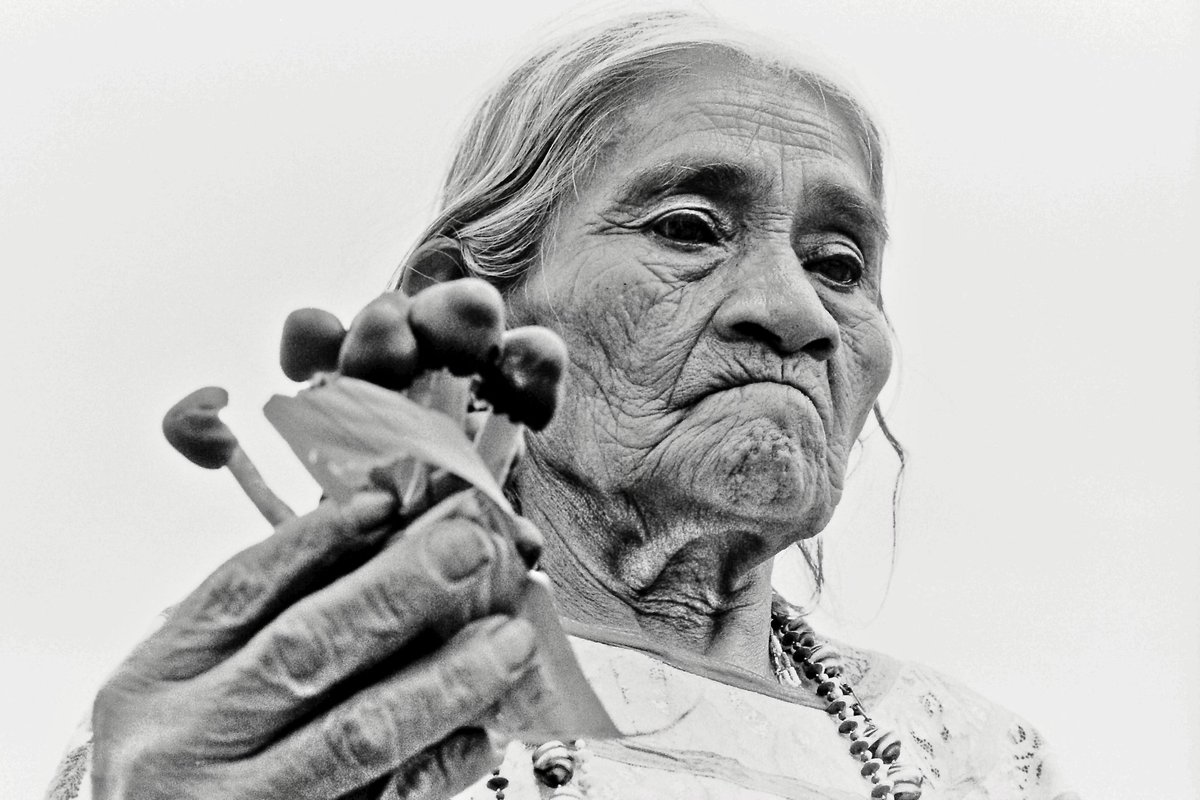In the 1970s & 80s, anthropologists working in small-scale, non-industrial societies fastidiously noted down what people were doing throughout the day. I’ve been exploring the data & am struck by one of the most popular activities: doing nothing. [thread] 

Background: The anthropologists (e.g., Bob Bailey, pictured) visited random people during waking hours & recorded what they were doing, building a representative sample of time use. Most of these data were collected while an anthropologist lived with the community for a year+. 

The researchers typically chose among ~60 activity codes, one of which was "Idle, doing nothing". This is different from napping, chatting, fixing tools, tidying up, & idleness b/c of illness. As far as I can tell, it's really about doing nothing at all, at least apparently. 

Here are data collected in '80-81 for the Efé, who lived mostly by hunting & gathering in the Ituri Rainforest of Central Africa. The median adult spent ~27% of their waking time doing nothing (in green). It was the most common activity. 

Here are the data for two Machiguenga communities in Peru, collected in '72-'73 (left) and '86-'87 (right). The Machiguenga combined small-scale horticulture with foraging. Again, "doing nothing" leads the pack, either as number one or in the top 3. 



"Doing nothing" didn't always win. For the Madurese (Indonesia), it ranked 12th, perhaps reflecting the tiresome lives of more full-time agriculturalists. Still, across 8 diverse communities "doing nothing" came in 4th behind agri work, learning/teaching, & socializing (see plot) 

Most of the high-ranking activities in these plots are well-studied by psychologists. But how much do we know about doing nothing? Not much. Living in fast-paced, industrialized societies with constant access to entertainment, it’s easy to lose sight of the value of doing nothing 

These data were collected in the 70s & 80s but were digitized (I believe) by @JoHenrich & then released in 2019 with this paper led by @RaBhui: pnas.org/doi/pdf/10.107…
Here’s a link to the digitized data: github.com/r-bhui/time-al…
Here’s a link to the digitized data: github.com/r-bhui/time-al…
Finally, I’ve been exploring these data in preparation for my talk at the Sophia Club (hosted by @Aeon) on June 14th in NYC! If you’re in the city that night, come & chat about leisure, idleness, & work across cultures:
sophiaclub.co/event/what-wor…
sophiaclub.co/event/what-wor…
An addendum: There have been lots of questions on gender. As I showed in my response to @kris_m_smith, if we compare the data for adults across the 8 communities (women in gray, men in green), we don't see a difference in how often men & women do nothing:
https://twitter.com/mnvrsngh/status/1510996359192662027
Yet women do work more, where work includes food prep, food production, childcare, manufacture, housework, etc. @RaBhui @JoHenrich found this when they analyzed these datasets in their PNAS paper, although they also found that the gender work gap declines with market integration: 

So, men & women do nothing at similar rates, yet women work more. How are men filling that extra time? We can make informed speculations. Look at the data again: Men socialize more (first on the right) & engage in more recreation. They also hunt, fish, & do more wage labor, but 

apparently not enough to outweigh work by women.
These are just impressions when aggregating individual-level data across the 8 communities. I'm sure each society exhibits its own idiosyncratic patterns.
These are just impressions when aggregating individual-level data across the 8 communities. I'm sure each society exhibits its own idiosyncratic patterns.
• • •
Missing some Tweet in this thread? You can try to
force a refresh





















